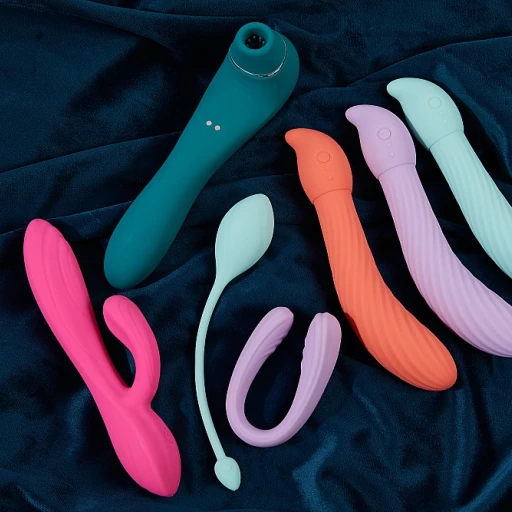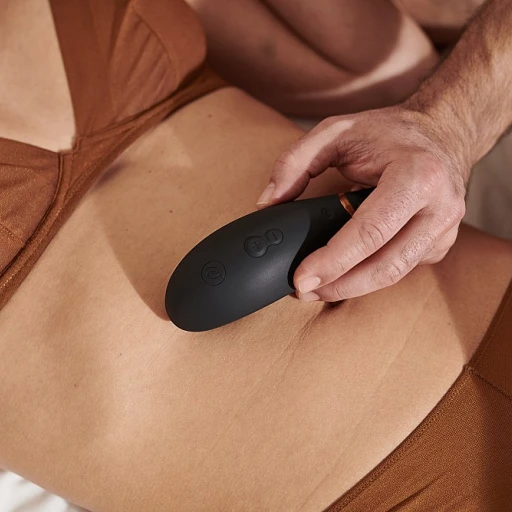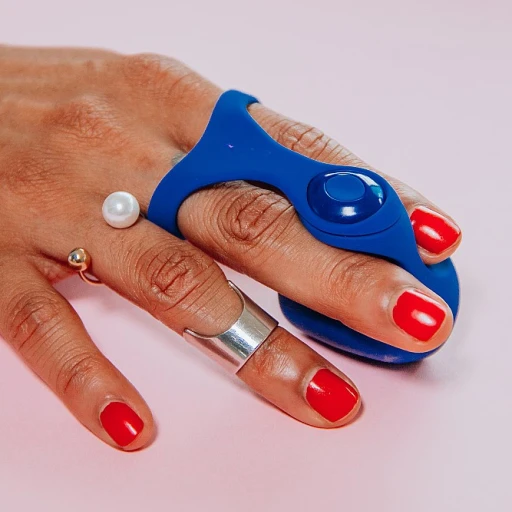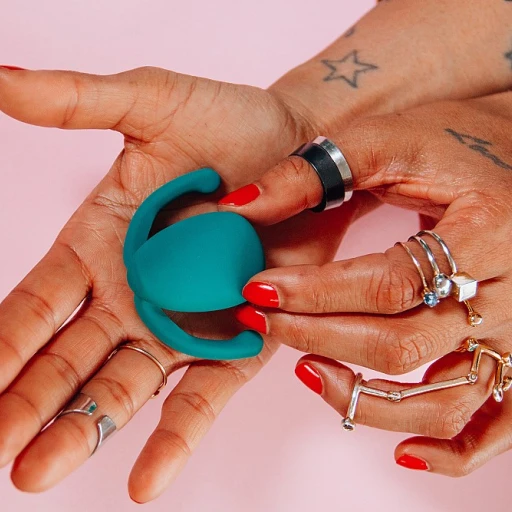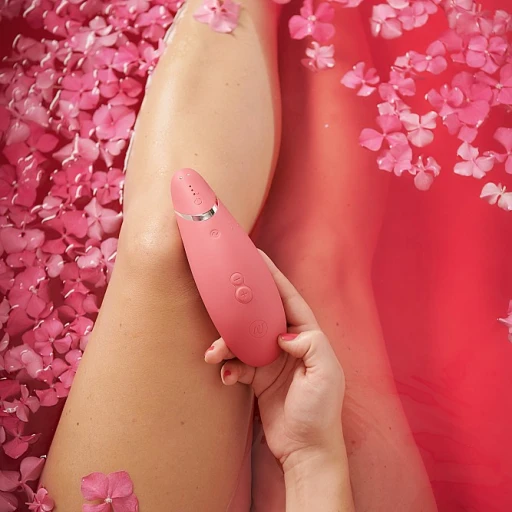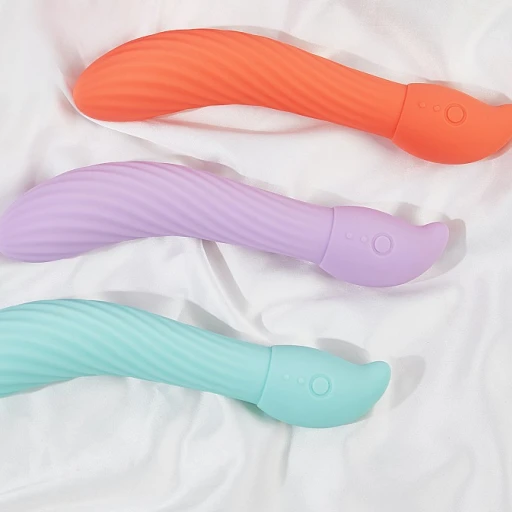
Understanding the Wartenberg Pinwheel
Discovering the Unique Sensations of the Wartenberg Pinwheel
The Wartenberg Pinwheel, a fascinating tool originally designed for medical and neurological purposes, has found its way into the realm of sensory exploration. This intriguing instrument, often made from stainless steel, features a wheel adorned with evenly spaced spikes. It was initially used by medical professionals to test nerve sensitivity and reflexes, making it a staple in diagnostic instruments.
While the pinwheel's origins lie in medical settings, its application has expanded beyond traditional uses. The tactile sensations it provides can be both stimulating and soothing, offering a unique experience that can enhance physical therapy or personal exploration. The wheel's gentle pressure can awaken nerve endings, creating a tingling sensation that varies in intensity depending on the pressure applied.
For those interested in incorporating this item into their routine, understanding its original purpose can enhance appreciation for its versatility. Whether you're exploring its use in a therapeutic context or as a cheap sex toy, the Wartenberg Pinwheel offers a range of sensations that can be tailored to individual preferences.
When considering adding this product to your collection, it's important to note the variety of options available. From high-quality surgical instruments to more affordable versions, there's a pinwheel to suit every need and budget. As you explore the different types, consider factors such as material, design, and price to find the perfect match for your needs.
Benefits of Using a Wartenberg Pinwheel
Advantages of Using a Wartenberg Pinwheel
The Wartenberg pinwheel, originally a neurological diagnostic instrument, has found a unique place in sensory exploration. This versatile tool offers several benefits, making it a popular choice among those seeking to enhance their sensory experiences.
- Enhanced Sensory Stimulation: The pinwheel's design, with its small, evenly spaced spikes, provides a unique sensation that can heighten nerve sensitivity. This makes it an excellent choice for those looking to explore new dimensions of touch and sensation.
- Versatility in Use: While it was initially used in medical settings for testing nerve reactions, the pinwheel's adaptability has made it a favorite in various contexts, including physical therapy and personal exploration. Its ability to stimulate nerve endings can be both therapeutic and pleasurable.
- Durability and Quality: Many Wartenberg pinwheels are crafted from high-quality stainless steel, ensuring longevity and resistance to wear. This makes them a reliable addition to your collection of sensory instruments.
- Accessibility and Affordability: As a product that has transitioned from medical to personal use, the Wartenberg pinwheel is widely available at a reasonable price. This accessibility allows more individuals to experience its benefits without a significant investment.
Incorporating a Wartenberg pinwheel into your routine can open a window to new sensations, whether you're using it as a standalone item or alongside other instruments like a reflex hammer or percussion hammer. As you explore its uses, remember to consider the safety tips and care instructions to ensure a positive experience.
How to Use a Wartenberg Pinwheel Safely
Using the Pinwheel Wisely and Safely
Exploring the thrilling sensations that a Wartenberg pinwheel offers requires some knowledge on safe practices. It's essential to ensure a pleasurable and risk-free experience, transforming your sessions into a delightful exploration of nerve sensitivity. Let's address how best to handle this intriguing neurological testing tool. First, understanding the instrument's anatomy is critical. The Wartenberg pinwheel, widely used by medical professionals, includes a rotating wheel lined with evenly spaced points. Typically crafted from high-quality stainless steel, this instrument was originally designed for testing nerve reactions in medical settings, like hospitals or physical therapy clinics. Here are some guidelines to ensure safety:- Inspect Before Use: Always check the tool for any damage before every session. Look for bent pins or rust, especially if it’s a less expensive product, as these could potentially harm the skin.
- Clean Thoroughly: High-quality pinwheels and other surgical instruments depend on cleanliness. Use appropriate methods to sterilize the surface, similar to protocols followed by medical or surgical professionals handling instruments like forceps or dental scalpel blades. This step is crucial for preventing infections.
- Test on Yourself: Before using the pinwheel on a partner, gently run it over your own arm to gauge the pressure. This self-test will help in adjusting the force applied to prevent discomfort or injury.
- Communicate and Consent: Clear communication with your partner is crucial. Discuss boundaries and always ask for feedback while transitioning into varied sensations, whether you're introducing a neurological test tool like the pinwheel or more traditional erotic products into your routine.
- Start Slow: Gradually increase the intensity level. Initially, use light pressure to assess the pinwheel's impact on nerve sensitivity. Many users find starting on less sensitive areas helps ease into the sensation.
- Vary Pressure: Like a reflex hammer used to test nerve response, altering the amount of pressure in different areas keeps the experience engaging while minimizing risks associated with constant heavy pressure.
Incorporating the Wartenberg Pinwheel into Your Routine
Integrating the Wartenberg Pinwheel into Your Sensory Exploration
Incorporating a Wartenberg pinwheel into your routine can enhance your sensory exploration, offering unique tactile experiences. This versatile instrument, originally designed for neurological testing, can be a fascinating addition to your collection of sensory tools.
To start, consider the following steps to seamlessly integrate the pinwheel into your routine:
- Preparation: Ensure your pinwheel is clean and ready for use. Its stainless steel construction makes it easy to maintain, as discussed in the care section.
- Environment: Set up a comfortable and safe environment. Whether you're using it solo or with a partner, a relaxed setting can enhance the experience.
- Experimentation: Begin by gently rolling the wheel over different parts of the body. Pay attention to areas with varying nerve sensitivity to discover what feels best.
- Feedback: If using with a partner, communicate openly about sensations and preferences. This feedback is crucial for a pleasurable experience.
- Routine Integration: Gradually incorporate the pinwheel into your regular sensory play. You might find it complements other items like a percussion hammer or reflex hammer, enhancing the overall experience.
Remember, the key to enjoying the Wartenberg pinwheel is to explore at your own pace. Whether you're a medical professional familiar with surgical instruments or a newcomer to sensory tools, this product can add a new dimension to your routine.
Choosing the Right Wartenberg Pinwheel for You
Finding the Perfect Wartenberg Pinwheel for Your Needs
When it comes to selecting a Wartenberg pinwheel, there are several factors to consider to ensure you get the most out of this intriguing instrument. Whether you're a medical professional using it for neurological tests or someone exploring its sensations as a cheap sex toy, choosing the right pinwheel can enhance your experience.
- Material and Build Quality: Look for pinwheels made from high-quality materials like stainless steel. This ensures durability and a smooth experience. Stainless steel is also easy to clean, which is crucial for maintaining hygiene.
- Design and Features: Consider the design of the pinwheel. Some come with multiple wheels or adjustable features. A single wheel might be ideal for beginners, while multiple wheels can provide varied sensations.
- Purpose and Use: Determine if you need the pinwheel for medical purposes, such as testing nerve sensitivity or in physical therapy settings, or for personal exploration. Medical professionals might prefer models that resemble traditional surgical instruments, while personal users might opt for more aesthetically pleasing designs.
- Feedback and Reviews: Check user feedback and reviews. This can provide insights into the product's performance and reliability. Look for comments on how the pinwheel performs in different settings, whether medical or personal.
- Price and Value: While it's tempting to go for the cheapest option, consider the value you're getting. A slightly higher price might mean better quality and longevity, making it a worthwhile investment.
Once you've considered these factors, you can confidently add the chosen pinwheel to your cart. Whether you're using it as a diagnostic instrument or exploring its potential as a cheap sex toy, the right Wartenberg pinwheel can open a window to new sensations and experiences.
Caring for Your Wartenberg Pinwheel
Maintaining Your Wartenberg Wheel
To ensure longevity and consistent performance of your Wartenberg pinwheel, proper care is essential. These instruments, often crafted from stainless steel, are designed to be durable, but they still require regular maintenance.
Start by cleaning your pinwheel with mild soap and warm water after each use. This is especially crucial if the product comes into contact with bodily fluids. Avoid harsh cleaning agents that could damage the metal or diminish its quality.
Dry the wheel thoroughly to prevent rusting. If your budget allows for it, investing in high-quality surgical items like this means they should last for an extended period when properly cared for.
Consider storing your pinwheel in a designated case or dry area to shield it from moisture and physical damage. This practice is similar to the care given to other diagnostic instruments like needle holders or reflex hammers. Protection not only maintains the product’s condition but also ensures safety for the end-user.
Lastly, if you're purchasing this item online or through any distributor, it's advantageous to examine consumer feedback regarding durability and shipping. This can add an extra layer of trust when you're ready to add this functional and original tool to your cart.


